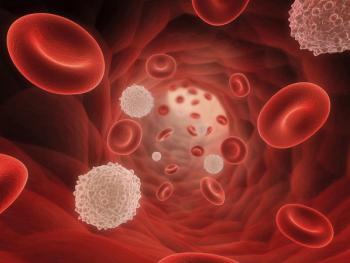
Maintenance Olaparib May Be Cost-Effective for BRCA-Mutated Metastatic Pancreatic Cancer
Study results suggested that maintenance olaparib (Lynparza) is potentially cost-effective compared with placebo for patients with metastatic pancreatic cancer and a germline BRCA mutation.
Study results published in the Journal of the National Comprehensive Cancer Network found that maintenance olaparib (Lynparza) is potentially cost-effective compared with placebo for patients with metastatic pancreatic cancer and a germline BRCA mutation.1
However, the researchers suggested that the economic outcomes observed in this study could be improved by tailoring treatment based on individual patient factors.
"The cost-effectiveness of olaparib as measured by cost-per-(quality-adjusted life-year [QALY]) is reasonably close to the commonly used willingness-to-pay thresholds,” co-author Bin Wu, PhD, of Shanghai Jiaotong University in China, said in a press release.2 “The value of olaparib maintenance would be even more attractive if the price were lower."
For the purposes of this study, the researchers adopted a partitioned survival model to project the disease course of metastatic pancreatic cancer. Efficacy and toxicity data were gathered from the Pancreas Cancer Olaparib Ongoing (POLO) trial and transition probabilities were estimated from the reported survival probabilities in each POLO group. Cost and health preference data were also derived from the literature.
Maintenance olaparib was found to have an incremental cost-utility ratio of $191,596 per additional progression-free survival (PFS) QALY gained, with a high cost of $132,287 and 0.691 PFS QALY gained, compared with results for a placebo. Moreover, subgroup analysis revealed that maintenance olaparib achieved at least a 16.8% probability of cost-effectiveness at the threshold of $200,000 per QALY.
One-way sensitivity analyses also revealed that the results were sensitive to the hazard ratio of PFS and the cost of olaparib. Further, when overall survival was considered, maintenance olaparib had an incremental cost-utility ratio of $265,290 per additional QALY gained, with a high cost of $128,266 and 0.483 QALY gained, compared with results for a placebo.
“Based on the results of the POLO trial, our analysis showed that maintenance olaparib treatment of [metastatic pancreatic cancer] harboring a BRCA1 or BRCA2 mutation could be optimal for [willingness-to-pay] thresholds <$200,000 per additional QALY when only the health benefits in the PFS disease phase were considered,” the authors wrote. “Nearly half of the subgroups favored maintenance olaparib treatment because of its positive trend of gaining an [incremental net-health benefit] compared with placebo.”
Importantly, due to a lack of data, the researchers did not evaluate other PARP inhibitors and chemotherapeutic agents as maintenance treatment. New PARP inhibitors such as niraparib (Zejula) have shown favorable economic outcomes as maintenance treatment in other cancers with germline BRCA mutations, thus the current analysis needs to be updated when evidence is available.
In addition, the costs of grade 1 and 2 AEs were excluded from the evaluation, which may overestimate the economic results of maintenance olaparib. Though this weakness may not be a major one, as suggested by the findings in the 1-way sensitivity analysis, because the results of this evaluation reflect the general clinical conditions of managing metastatic pancreatic cancer this finding may be a valuable reference for physicians and policymakers
“These findings may help clinicians make optimal treatment decisions for patients with [metastatic pancreatic cancer],” the authors concluded. “Because of the methodological flaws in the present study, more quality clinical and economic real-world data are needed in this area; we believe that this focus will provide more sound evidence as a framework for determining the value of different therapeutic alternatives in oncology.”
References:
1. Wu B, Shi L. Cost-Effectiveness of Maintenance Olaparib for Germline BRCA-Mutated Metastatic Pancreatic Cancer. Journal of the National Comprehensive Cancer Network. doi: 10.6004/jnccn.2020.7587
2. New Research in JNCCN Evaluates Cost-Effectiveness of Olaparib, a PARP Inhibitor, for Metastatic Pancreatic Cancer [news release]. Plymouth Meeting, Pennsylvania. Published November 12, 2020. Accessed November 13, 2020. https://www.biospace.com/article/releases/new-research-in-jnccn-evaluates-cost-effectiveness-of-olaparib-a-parp-inhibitor-for-metastatic-pancreatic-cancer/
Newsletter
Stay up to date on recent advances in the multidisciplinary approach to cancer.


















































































